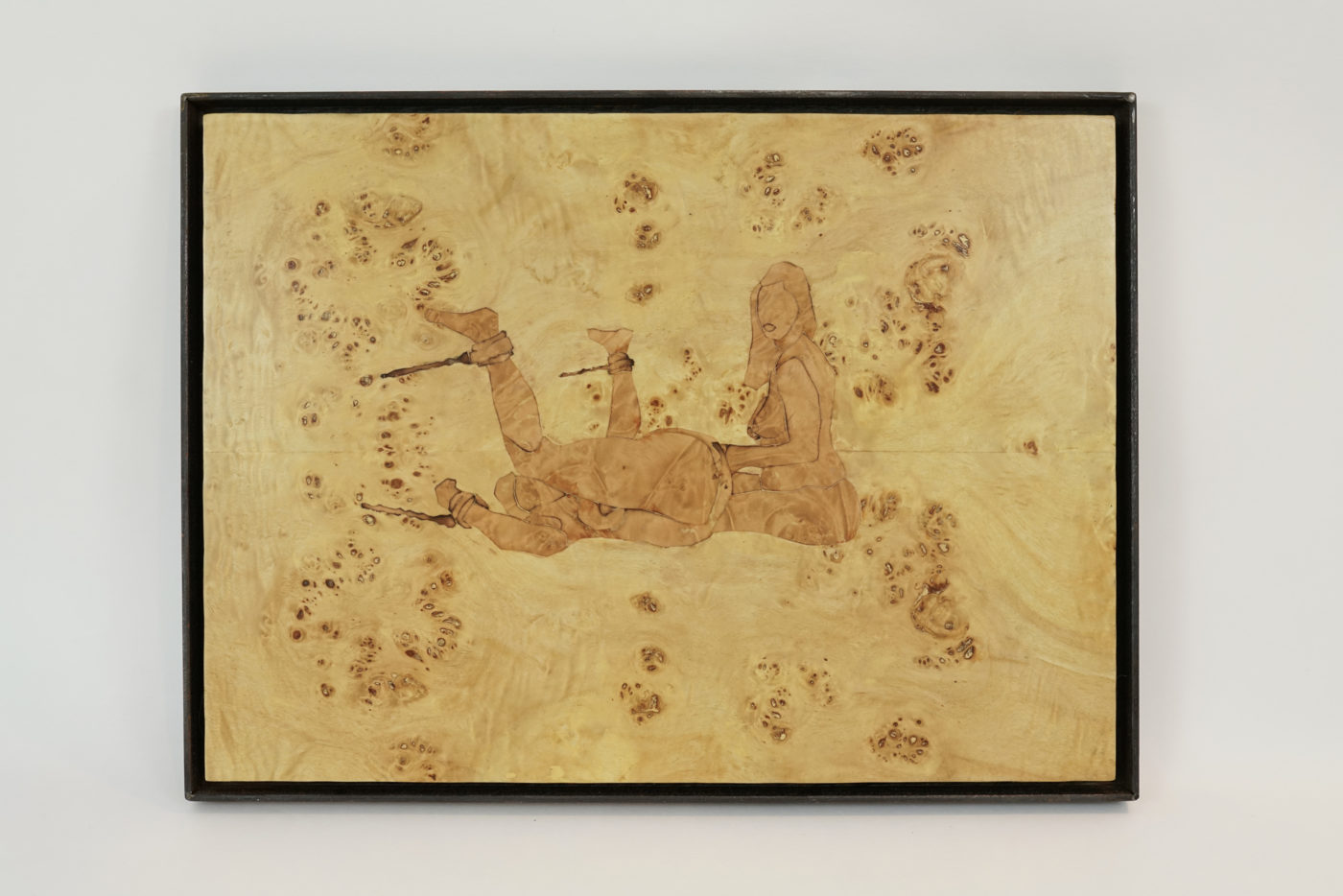(formerly Liliana Piskorska, b. 1988, lives in Wrocław) earned her MFA and DFA from the Faculty of Fine Arts of the Nicolaus Copernicus University in Toruń. In artistic practice, she analyzes social issues from the perspective of radical sensitivity, dealing with the subject of queer and non-heteronormativity. Zeic locates his interests in the context of Central European and peripheral identity. She works with video, photography, object, and text, creating intermedia and performative projects based on artistic research.
works from the series Benefits of BDSM for Trauma Survivors and Meristems, 2022, marquetry, courtesy of the artist
The works are devoted to the presentation of non-normative sexuality and the liberation of the queer body. The artist made them by hand in the inlay technique used to decorate wooden furniture. In relation to the matter of wood and the human body, she searched for natural representations of disease, otherness, self-regeneration, and growth. She discovered these qualities by working with burr, creative tissues, galls, and queer BDSM practices. Considered a defect, a burr is a growth that results from the swelling of a tree’s trunk. It is caused by damage: it can be a virus, fungus, genetic defect, or mechanical injury. When a trunk is injured, scar tissue becomes active, which gradually widens the rings, creating bulges and changes in the arrangement of wood fibres. The infection can also stimulate the previously dormant side shoots, which start to build up in an uncontrolled, avalanche way, creating the so-called knots. The artist uses this “defective” material to affirm instincts and sexuality that cross the borders of patriarchal social norms. In the series BDSM Benefits for Trauma Survival, Zeic explores the potential of queer BDSM practices in trauma processing. The titular meristems, on the other hand, are tissues made up of cells capable of dividing. An attack by insects will cause them to grow the so-called galls, i.e. abnormal outgrowths of plant tissues processed and controlled by herbivorous insects as their microhabitats. They are called galls after the Latin galla, “oak-apple,” or cecidia, from the Greek kikidion, “something that gushes out.” A gall becomes both a habitat and a food source for an insect, and can also provide physical protection against predators. The artist uses the metaphors and matter of meristems, galls, and burrs to support nature for the development of space for queer life. By referring the social tissue to biology, she also undermines arguments about “natural” and “unnatural” human tendencies.
Wahlverwandschaften # 3, 2020, object, meadow straw, rope, pins, styrodur, courtesy of the artist
“Wahlverwandtschaften in German means affinity by choice or spiritual affinity and is also the title of the famous 1809 novel by Johann Wolfgang Goethe. Its main axis is the conflict between love and social norms. The reception of the novel raises controversy as to whether this concept relates rather to Wahl (choosing to respect marriage vows despite opposing inclinations) or Verwandtschaften (affinity that does not respect social conventions)”. The name Wahlverwandtschaft was also used by Jadwiga Skirmunttówna to describe her unconventional relationship that began at the beginning of the 20th century with the writer Maria Rodziewiczówna. Skirmunttówna and Rodziewiczówna are among the protagonists of Liliana Zeic’s Book of Sources. This project was devoted to restoring the threads of female love, friendship, and cooperation that had been erased from the history of Polish culture.
Photo: Benefits of BDSM for Trauma Survivors, 2022, courtesy of the artist [based on materials from the artist’s website: lilianapiskorska.com]

Venue
Galeria Biblioteki Uniwersyteckiej, al. Wojska Polskiego 71












